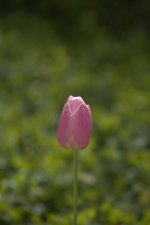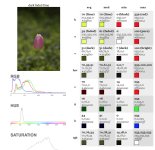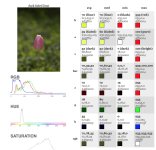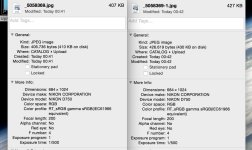Let me show you:
I converted one NEF twice; once to DNG using the DNG converter and once to TiFF. I then loaded both in the same editor and simply saved them as JPEG.
The shots:
View attachment 156792 View attachment 156794
They look similar.
Now let me run them through an analyser.
View attachment 156796 View attachment 156797
Close but no cigar. This is while using the same editor. If I'd use a different editor, the end results would differ much more.
? Oops! I definitely do not want to pursue this any more (wrong road geeky comparisons instead of practical pictures that we can actually see), but will mention that I question your comparison, whatever it is. Only rhetorically, no answer sought.
Here is my quicky comparison:
This is Photoshop menu Image - Calculations - Difference. It is your two images, and the second has been updated to show just the differences from the first one, the brightness of the difference in the red channel.
All differences are highlighted there. Frankly, I see absolutely nothing. File size is even the same, which is something for JPG.
Just for example of the tool, here:
What does JPG Quality Losses Mean?
is the same tool showing the difference in a 100% JPG and a PNG file (lossless compression). Even at 100%, JPG is still JPG, and the differences (here) are all edge effects.
The only point of mentioning this is to show how the tool shows differences in pixels. If there are any differences.
So if I convert a RAW to TiFF and then process that Tiff, I can not go back to the original RAW?
I guess I then have been performing miracles until now.
Try listening to the words.

At most, you can go back to the TIF you got from the raw editor. It contains whatever edits the raw editor did (apparently those you seek). It is NOT the original raw data which you otherwise could have obtained, when you might become disillusioned with the camera settings you made months ago, instead of for todays scene. One huge advantage of raw is that we can see it before we have to decide.
Wayne, i'm not too sharp on this stuff but i just wanted to try keeping the Nikon profile on the Raw and then edit in LR. I've tried Adobe's camera profiles in Lr and they are not the same so i wanted to try this method. I'm not even familiar with Adobe raw, is that in photoshop? I'm probably making things harder than they have to be but figured i'd give this a try in my effort to keep the Nikon color and edit from there.
The same Adobe Camera Raw (ACR) module is in Photoshop, Lightroom, and Elements. All work the same (Elements does omit all but the basics features however).








